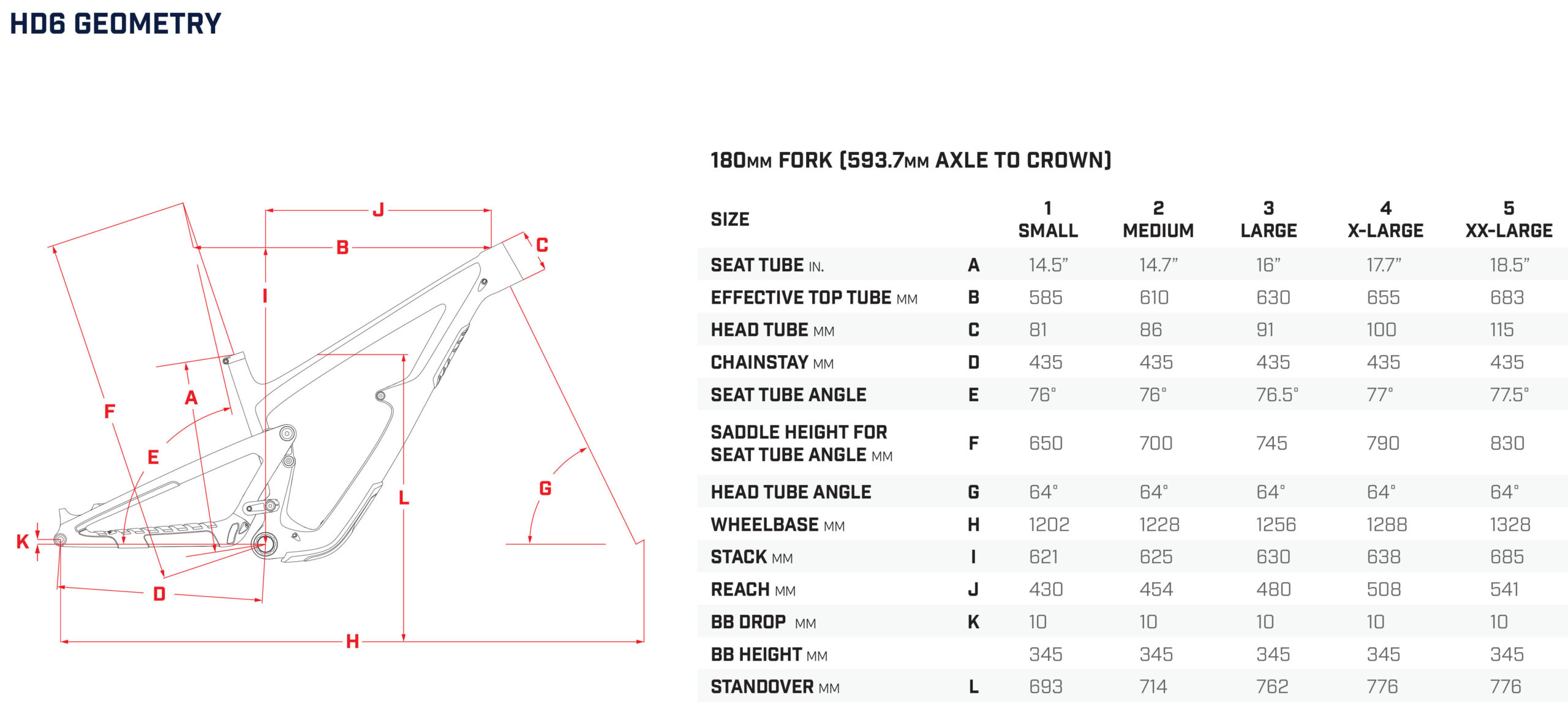Ibis HD6
Wheel Size: 29’’ front / 27.5’’ rear
Travel: 165 mm rear / 180 mm front
Geometry Highlights:
- Sizes offered: S1, S2, S3, S4, S5
- Headtube angle: 64°
- Seat tube angle: 76° – 77.5°
- Reach: 480 mm (Size S3)
- Chainstay length: 435 mm
Frame Material: Carbon fiber
Price:
- Frame w/ Fox Float X2 Factory shock: $3,899
- Complete bikes: $6,099 to $11,199
Stated Weight:
- HD6 frame w/ Fox Float X2 shock: 7.7 lb / 3.5 kg (size S3)
- Complete bikes from 31.66 lb / 14.46 kg (size S3)
Blister’s Measured Weight (Ibis HD6 XX AXS, S3): 32.43 lb / 14.71 kg
Test Location: Washington
Reviewers:
- Zack Henderson: 6’, 160 lbs / 183 cm, 72.6 kg
- David Golay: 6’, 170 lb / 183 cm, 77.1 kg
Test Duration: 3 months

Intro
Modern Enduro bikes have grown substantially in suspension travel and wheelbase in recent years, and while the Ibis Ripmo is a bike that we could see a lot of folks getting along with — and was the bike that their Enduro race team was piloting until relatively recently — it’s more like an aggressive Trail bike by contemporary standards. So it wasn’t a huge surprise when a new, beefier-looking bike started showing up under Ibis’ athletes, and now that new model — the HD6 — is here.
Ibis says that the HD6 was designed with input from their Enduro World Cup team to be a race bike first and foremost, and while it certainly seems like a bike that could readily serve as one, a number of the design details stand out from that class as well. So how has Ibis gone about designing their longest-ever-travel model, and what sets it apart? Let’s check out the HD6.
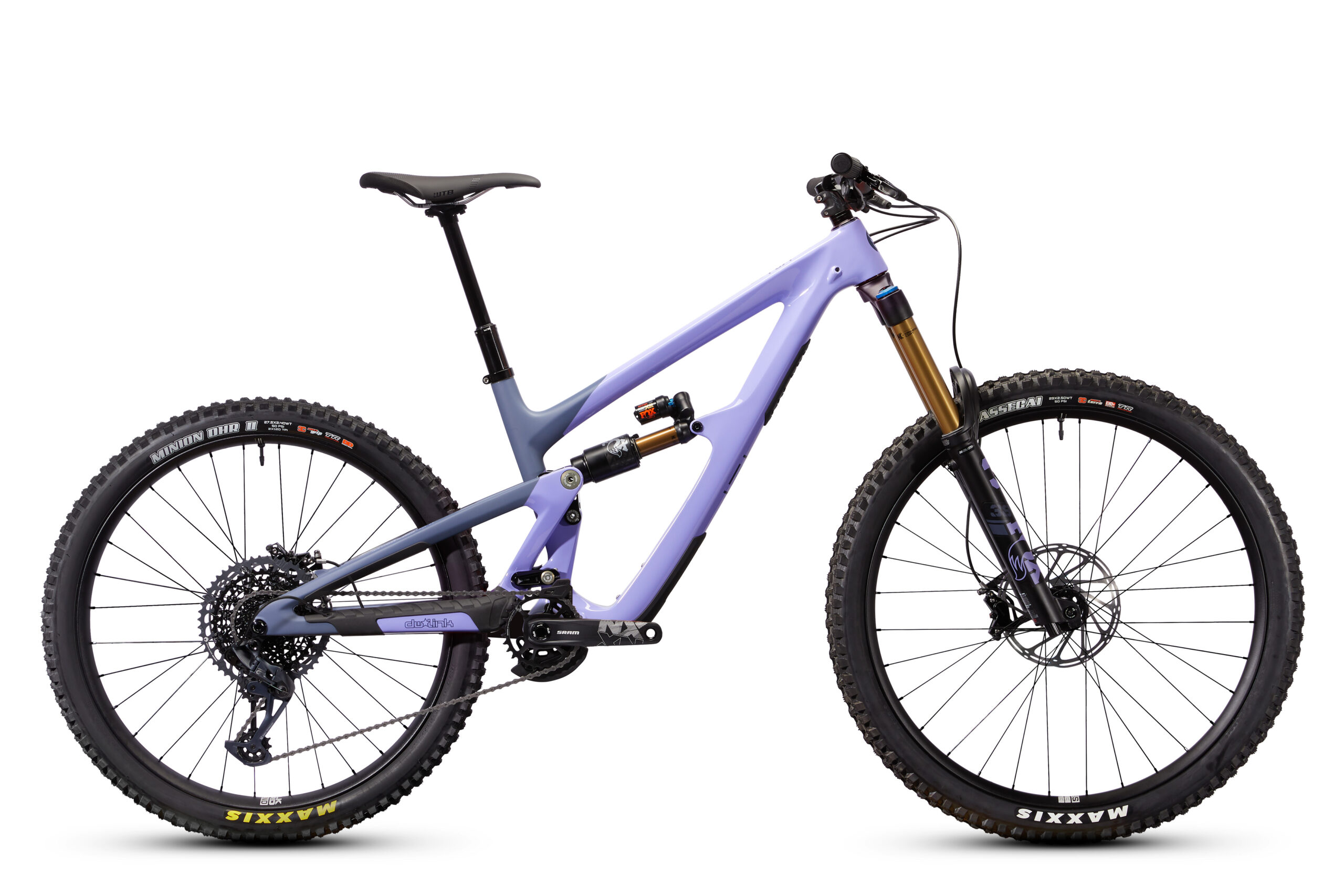
The Frame
The new HD6 (the “Mojo” part of the name has been dropped from the prior-gen Mojo HD5) now rolls on mixed-size wheels with a 29’’ one up front and a 27.5’’ in back, and is built around a 180mm-travel fork with 165 mm of rear suspension travel from a 230 x 65 mm shock. Ibis’ longstanding use of dw-Link suspension continues on the HD6, but in a substantially different arrangement than we’ve seen from them before. The upper link now sits forward of the seat tube and is attached to a much shorter yoke to drive the shock as compared to the Ripmo and Mojo HD5; interestingly, the wild-looking layout on their Oso e-bike didn’t make its way over to the HD6, either. Ibis doesn’t publish any kinematic data for the HD6 but says that it’s compatible with both air and coil shocks (though the complete builds all come with the former). Ibis also notes that they’ve designed the suspension to offer strong pedaling performance without the need for a ton of compression damping to control the suspension; Ibis argues that helps make for a smoother, more planted ride. It’ll be interesting to see how the stock suspension tune feels on the HD6, and whether it feels notably lightly damped or just not particularly reliant on climb switches to pedal well (or something else entirely), but we’ll need to get one to find out.
Ibis’ stated weight for the HD6 frame is notably light at 7.7 lb (3.5 kg) for a size S3 frame with a Fox Float X2 Factory shock. That’s very light for a big Enduro bike, and Ibis’ stated weights for the complete bikes (31.66 lb / 14.46 kg for the top-spec XX build, in a Size S3) are correspondingly impressive. But despite that notably low weight, Ibis hasn’t pared back the feature set from what we’re accustomed to on modern high-end bikes. Cable routing is fully internal (but not through the headset, thankfully) with tubes to guide it through the frame; there are large rubber guards on the seatstay, chainstay, and downtube (including a shuttle pad); a full set of removable ISCG-05 chainguide tabs; and room for a water bottle across the size range (up to 22 oz on the Size 1 frame and 26 oz on the larger ones). The bottom bracket shell is threaded, the HD6 gets a 180 mm rear brake mount that Ibis blesses bumping up to as much as a 220 mm rotor, and rear tire clearance is stated at 2.5’’ wide. The HD6 comes with a lifetime warranty on the frame for the original buyer. Ibis also offers a “Porkchop” frame storage bag for sizes 2 and up, and there’s an extra accessory mount underneath the top tube as well.



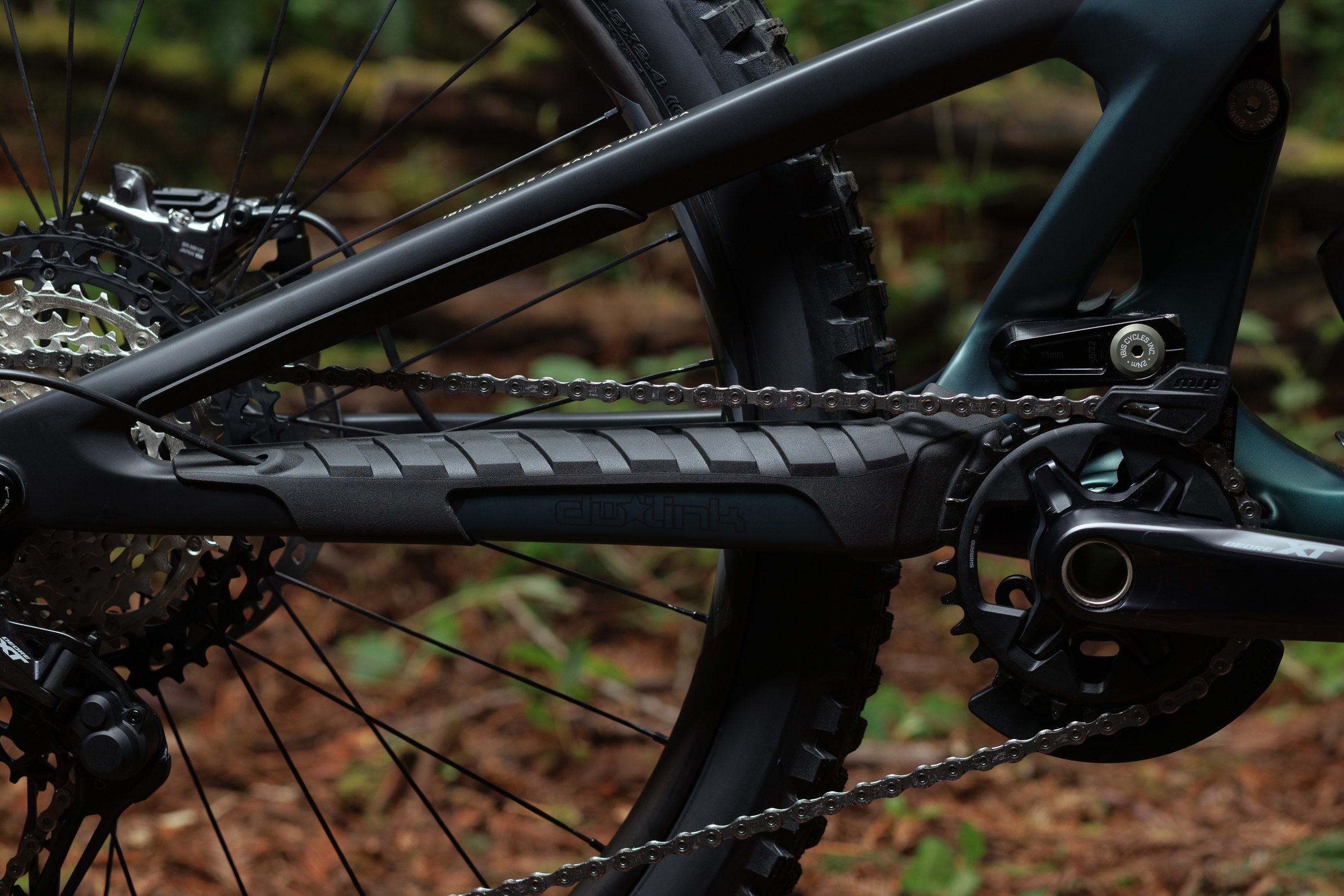
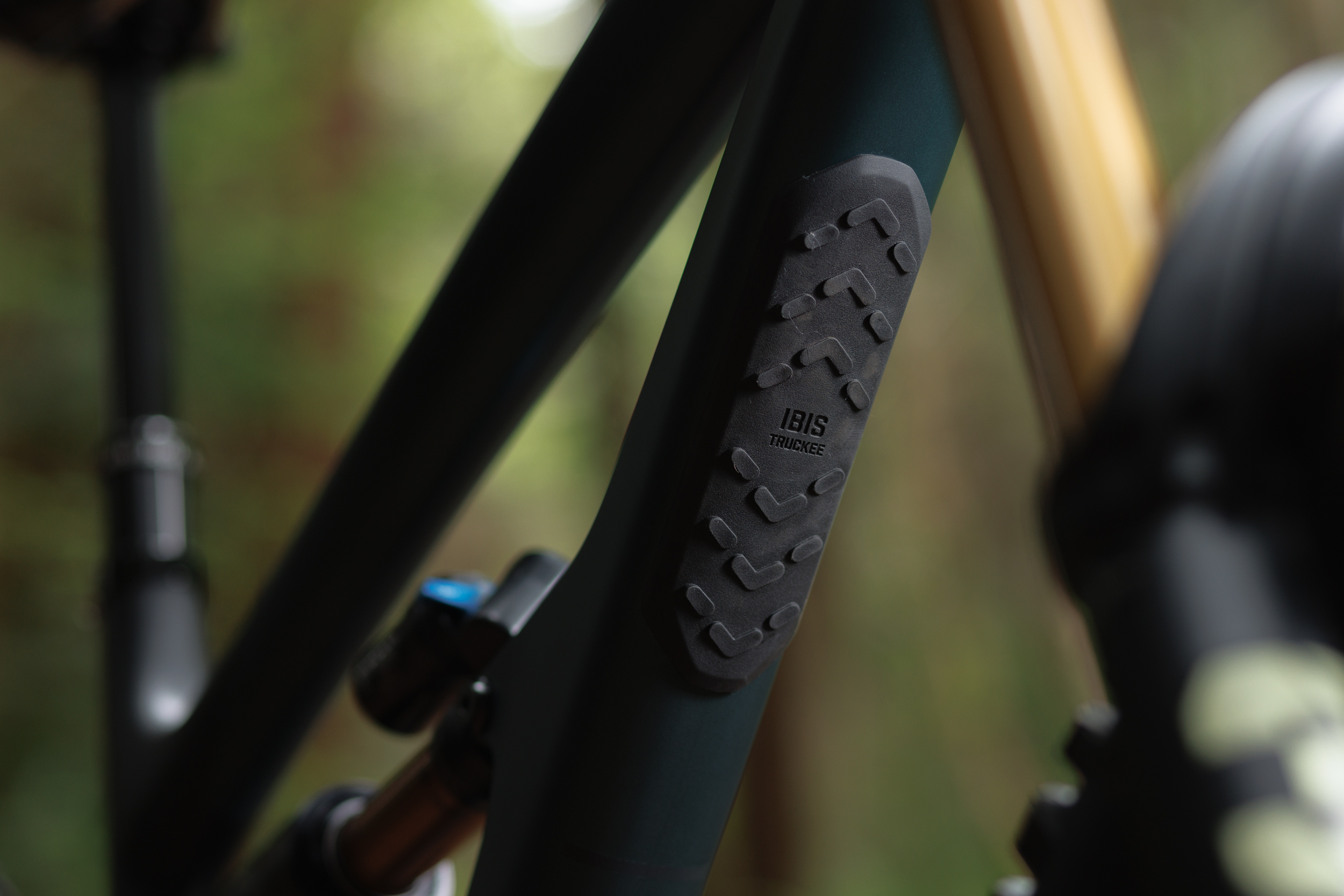
As Ibis has been doing for a while now, the lower link pivots on bushings, which they say helps reduce the need for service (while the higher-rotation upper link uses bearings); the partial bushing layout probably contributes to the low frame weight as well. Ibis is confident in the durability of those bushings and backs that up by offering free lifetime replacement of them for the original buyer.
And as with the recently-updated Ripley and Ripmo V2S models, the HD6 is designed specifically for a 55 mm chainline layout. That’s the default option for the new SRAM T-Type groupsets (which the HD6 supports by way of a UDH hanger) and is readily available for other drivetrain options as well, though it necessitates a slightly wider crank with an increased Q-factor in many cases. Ibis has also gone to a 34.9mm-diameter seatpost on the HD6, with the goal of improving seatpost durability with longer-travel posts becoming commonplace.

Fit & Geometry
Ibis has moved to a numeric sizing scheme on the HD6 and offers it in five sizes, labeled S1 through S5, which they roughly correlate to Small through XXL in a traditional sizing scheme. Reach ranges from 430 mm to 541 mm in roughly 25 mm increments through the first four sizes, coming in at 454, 480, and 508 mm on the S2, S3, and S4 frames, before making a bigger jump up on the S5. The headtube angle is 64° across the range, and Ibis rightly notes that similar seat tube angles result in taller folks on bigger frames sitting farther back on the bike, given their taller seat heights; accordingly, the HD6’s seat tube angle starts at 76° on the S1 and steepens to 77.5° on the S5. The chainstays, on the other hand, hold steady at 435 mm across the full size range — a number that we’d expect to feel moderately short on even the smaller sizes, and quite notably so on the bigger ones, especially given the mullet wheel size configuration.
It’s worth noting that Ibis’ stated bottom bracket drop is relative to the rear axle, so while the 10 mm figure sounds low (i.e., resulting in a high bottom bracket) compared to the more common standard of measuring relative to the front axle, it’s pretty normal for a bike in this travel range.
[Dear industry: please pick a way to state bottom bracket drop on mixed-wheel-size bikes and use it consistently. We see it listed relative to the front axle, rear axle, and the imaginary line between the two, often with little clarity on which one is being used. This isn’t an Ibis-specific complaint in the slightest, but let’s just pick one and stick with it.]
Anyway, Ibis makes particular note of the fact that they’ve kept the standover and seat tube quite low across the size range of the HD6, to make it easier for folks to size up or down to get their desired handling characteristics. And the move to numeric sizing is part of that plan, to help encourage folks to think a bit more about the sizing they really want, rather than simply opting for the same nominal size that they’ve been on dating back to the days when mountain bike geometry and fit were radically different than they are now. We’re on board with that line of thinking, and it’s cool to see more companies moving in that direction.
The Builds
Ibis has four complete builds on offer for the HD6, and as per usual for them, all get Fox suspension but with a mix of Shimano and SRAM drivetrain and brake options. Complete bikes start at $6,099, or if you’d rather build up your own HD6, there’s a frame-only option with a Fox Float X2 Factory shock for $3,899.
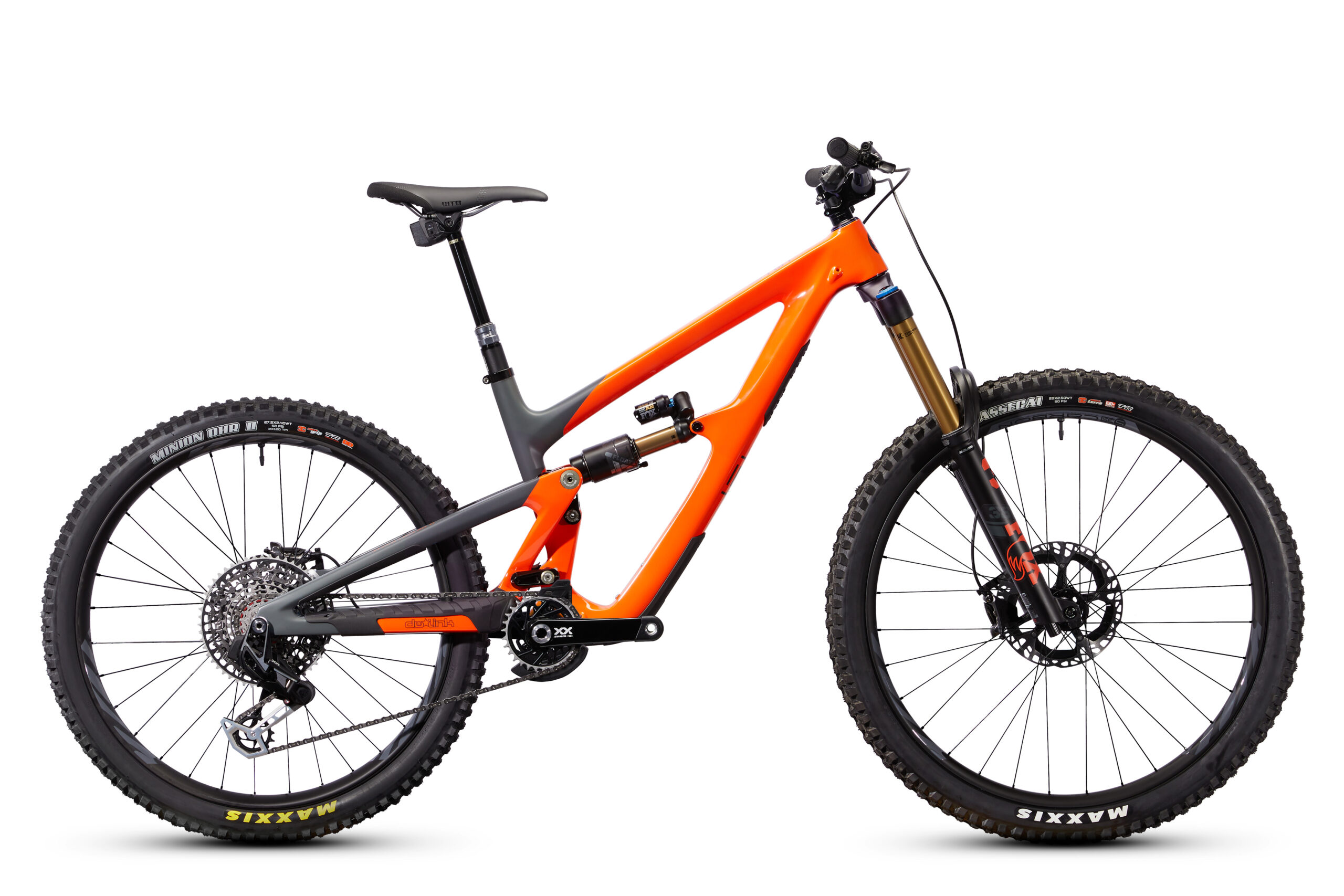
- Drivetrain: SRAM NX shifter, crank, and chain w/ GX derailleur and cassette
- Brakes: SRAM Code RSC (200 mm rotors)
- Fork: Fox 38 Factory
- Shock: Fox Float X2 Factory
- Wheels: Ibis Blackbird Send rims w/ Ibis hubs
- Dropper Post: KS Rage-i
- Drivetrain: Shimano SLX
- Brakes: Shimano SLX 4-piston (203 mm rotors)
- Fork: Fox 38 Factory
- Shock: Fox Float X2 Factory
- Wheels: Ibis Blackbird Send rims w/ Ibis hubs
- Dropper Post: Bike Yoke Revive
- Drivetrain: Shimano XT
- Brakes: Shimano XT 4-piston (203 mm rotors)
- Fork: Fox 38 Factory
- Shock: Fox Float X2 Factory
- Wheels: Ibis Blackbird Send rims w/ Ibis hubs
- Dropper Post: Bike Yoke Revive
- Drivetrain: SRAM XX T-Type
- Brakes: SRAM Code RSC (203 mm rotors)
- Fork: Fox 38 Factory
- Shock: Fox Float X2 Factory
- Wheels: Ibis Carbon rims w/ Industry Nine Hydra hubs
- Dropper Post: RockShox Reverb AXS
All four builds come with Maxxis Assegai Exo+ front / Minion DHRII DoubleDown tires (rubber compounds aren’t specified), and the builds that don’t default to Ibis Carbon / Industry Nine Hydra wheels can be upgraded to those for a $1,400 upcharge. Ibis also doesn’t specify where the sizing breaks are but indicates that the dropper post lengths top out at 185 mm for the Bike Yoke Revive equipped models, which seems surprising, given the very big size range and the fact that Ibis specifically says that they went to a 34.9 mm seat tube to better support long-travel dropper posts. Ibis is also spec’ing 40 mm stems on the smaller sizes and 50 mm ones on the bigger ones (again, where the break occurs isn’t stated) which we tend to view as something of an anachronism from the era when bike companies were afraid to make wheelbases on bigger sizes too long, and did things like slackening seat tube angles and installing longer stems to lengthen the cockpit.
It’s also interesting that all four builds get top-tier Fox Factory suspension. We’re certainly proponents of spending money there over, say, the drivetrain for a more budget-conscious Enduro bike build (though might argue that Performance Elite suspension would be the best bang-for-buck option), and the few quirks noted above aside, the build specs seem generally quite sensible. There’s not much in the way of budget options, but that’s pretty standard for Ibis’ carbon bikes (whereas their aluminum models tend to be much more budget-focused in their builds).
Some Questions / Things We’re Curious About
(1) The HD6 is an interesting bike, with new (and pretty excellent-looking, in my opinion) design language, and geometry that’s a bit of a blend of progressive modern design (big size range with some very long larger sizes and steep seat tubes) with some more conservative elements twisted in (short chainstays, moderate headtube angle). So how is that all going to add up on the trail?
(2) And to what extent does the HD6 feel like a fully game-on Enduro race bike, as opposed to something that could be a long-legged everyday Trail bike for some folks? Ibis talks a lot about the Enduro race intent for the HD6, but a lot of the design details look like they could make for something pretty versatile, too.
FULL REVIEW
Ibis has long been known for making bikes that pedal particularly efficiently, and that signature blend of efficiency under power and not-too-demanding handling traits are part of why the Ibis Ripley and Ripmo are such a common sight on many trails.
With the HD6, Ibis made their first dedicated mixed-wheel bike, and their longest-travel bike to date, with 165 mm of rear travel and 180 mm up front. While all that suspension certainly hints at the bike’s intentions, the HD6 also has some of that unique Ibis DNA shared with the other bikes in their range, and the result is a much more versatile — and playful — bike than the HD6’s big travel numbers would suggest.

Fit & Sizing
Zack Henderson (6’, 160 lbs / 183 cm, 72.6 kg): The geometry of the HD6 doesn’t stand out a whole lot from the rest of the Enduro crowd in most respects, and given how well-sorted bike geometry has gotten in recent years, that’s probably a good thing.
Ibis moved to numerical sizing for the HD6, an approach that is meant to encourage riders to pick the size that suits their preferred handling and fit requirements, rather than the nominal size they’re used to riding. In our case, that means David and I were spending time on the S3 — which is essentially a conventional size Large.
From the get-go, it’s impossible not to notice the HD6’s incredibly stubby head tube — just 91 mm in length on the S3. That very short headtube is a product of Ibis keeping the stack in check with the bike’s lengthy 180mm-travel fork, resulting in a 630 mm stack on the S3. While I am generally a fan of higher stack heights these days, the HD6 actually felt great to me when paired with a 30–35 mm rise handlebar.
The S3 HD6’s reach measurement is right in my sweet spot at 480 mm, and its head tube angle is a fairly typical 64°. I did appreciate the fit of this bike’s slightly longer-than-average 630 mm effective top tube measurement, especially paired with the 50 mm stem. It seemed to help counteract some of the traits of the HD6’s not-super-steep 76.5° seat tube angle and notably short 435 mm chainstays — more on that in the on-trail impressions below.

Another feature of the HD6’s fit that I appreciated was its short seat tube and rather low standover height. As we’ll get into below, the low-slung frame catered well to the bike’s generally playful ride feel, and while the 170 mm of drop on the Reverb AXS seatpost didn’t quite maximize the potential for a longer-drop seatpost, most riders on the S3 should have no issue fitting a 200mm-drop post should they like to.
David: I’m mostly in agreement with Zack here. Despite their move to numerical sizing and the (laudable) goal of encouraging folks to pick the frame size that actually makes sense for them rather than the nominal one that they’re accustomed to, Ibis does publish a recommended sizing chart for the HD6 based on rider height.
At 6’ tall, that chart puts me (and Zack) at the very top end of the band for the S3, and a little ways into the range for the S4, but I wasn’t the least bit tempted to size up. The 480 mm reach on the S3 we rode is on the shorter end of my normal preferred range for a bigger Enduro bike, but the HD6’s seated cockpit feels relatively long. And while I could probably manage the 508 mm reach on the S4 fine while descending, I suspect the S4 would be a good bit more stretched out when seated than I’d prefer.
There’s also the matter of chainstay length and chassis balance. At 435 mm, the HD6’s stays are moderately short for the S3; once you get to the S4 (and even more so the S5), that number sounds very short, and the HD6 gets the same length stays across the whole size range. As we’ll get into below, I think I’d prefer the S3 HD6 if its chainstays were a little longer; I can only assume that sizing up would heighten that sensation.
So, I think that the S3 was definitely the right size for me on the HD6, and I was pretty happy with the fit overall. Like Zack, the stack height sounded a little short to me on paper, but actually felt pretty reasonable once I got the HD6 on dirt, particularly in light of what the HD6 does (and doesn’t) do especially well. More on that in a minute.
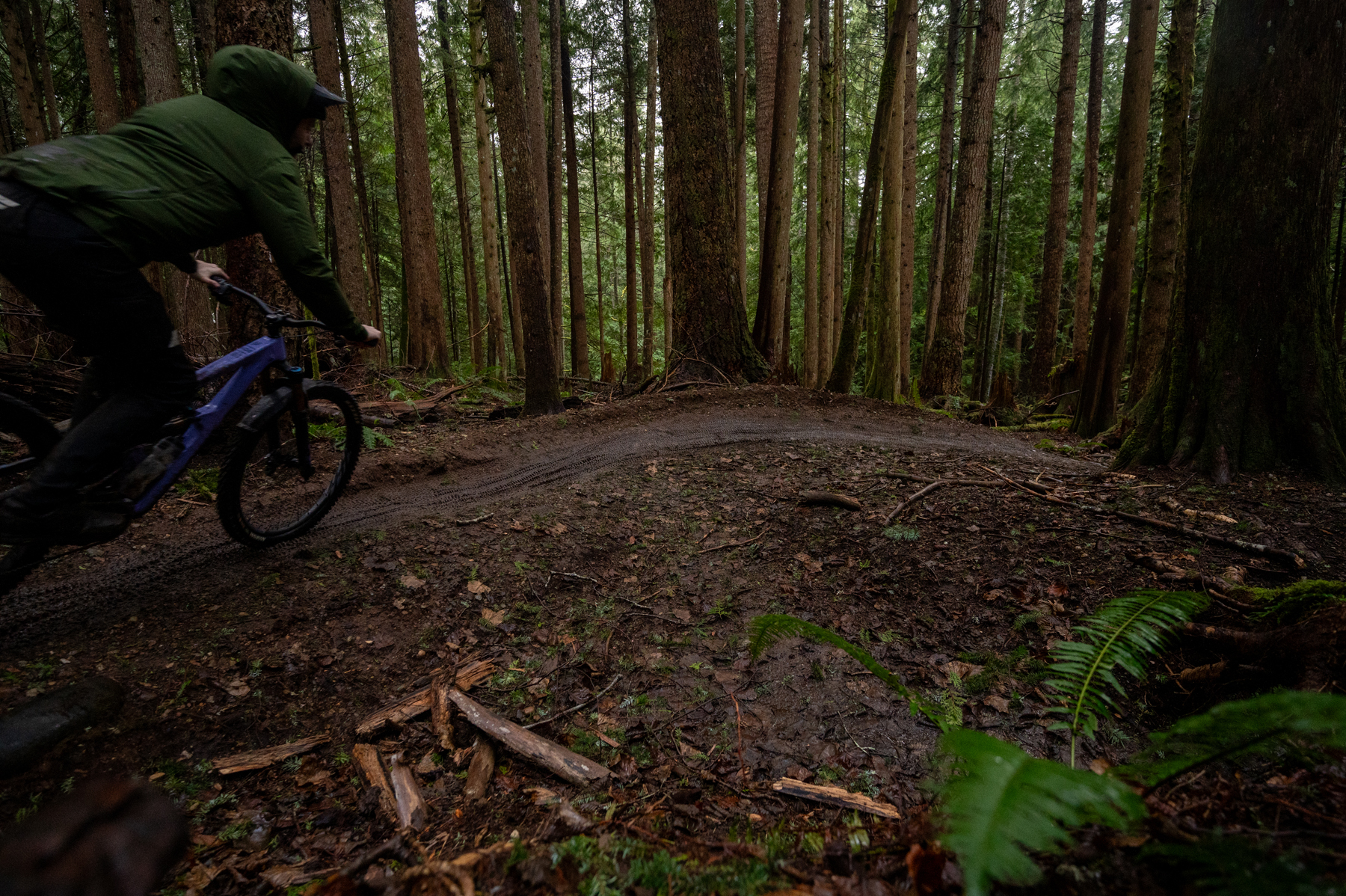
Climbing
Zack: David got into this right away in his earlier Flash Review of the HD6, but it’s impossible not to immediately notice the peppy climbing characteristics of the HD6. It’s really, really light for a modern Enduro bike, at just over 32 lbs for our S3 test bike in the XX AXS build (including a Maxxis Double Down tire out back). That certainly helps, and while a lot of big Enduro bikes feel happiest winching up fire roads at an even pace, the HD6 was quite engaging on more technical climbs.
Flatter sections of trail are also a pleasure to ride on the HD6, again because of how efficient and light-footed the bike feels. Its low weight makes the bike easy to place on more awkward, chunky bits of trail where keeping momentum requires some more forceful and dynamic movements, while its 64° head angle and 50 mm stem make the front end feel fairly sharp-handling and conducive to direction changes.
A lot of this undoubtedly comes down to Ibis’ implementation of DW Link rear suspension on the HD6, which keeps the rear end quite composed under harder pedaling efforts. I was glad for all that support from the rear suspension because the bike’s very short 435 mm chainstays definitely give the HD6 a tendency to wander a bit on steeper pitches if you let your weight sit too far back.
While Ibis does steepen the HD6’s seat tube angle as sizes get larger, a slightly steeper seat tube angle would help to counteract that and would be on my wish list for future iterations of the HD6 (along with slightly longer chainstays to suit my personal preferences). But even without those changes, the HD6 is quite an impressive example of an Enduro bike that is more than happy to go up the hill, too.
David: Yup. There are a lot of 160+mm-travel Enduro bikes that do a pretty good job of grinding their way up a long fire road, but it’s rare for a bike with this much travel to feel as snappy and eager to go uphill as quickly as the HD6 does.
The very low weight of our blinged-out XX Transmission review bike certainly doesn’t hurt, but the HD6’s suspension deserves a bunch of credit there, too. It’s very, very efficient under power, and manages that while still offering decent traction too. It’s a genuinely excellent climbing bike.

Like Zack, if I have any complaints with the HD6’s climbing performance, it’s that the bike’s combination of pretty short chainstays + not-super-steep seat tube angle requires a little more attention than most modern Enduro bikes to keep the front wheel planted when the climbs get very, very steep. The HD6 is still plenty manageable on even some very, very heinous fire road grinds, but you do need to take a little care to stay forward on the bike in a way that a lot of modern Enduro sleds don’t require.
The more you’re climbing mega steep fire roads all the time, the more that’s likely to be at least a mild annoyance on the HD6; on the flip side, the HD6 feels easier to manage on more varied, technical climbs than most other long-travel Enduro bikes. I think some credit there goes to the HD6’s combination of being (1) relatively maneuverable at low speeds (aided, I’m sure, by its short-ish chainstays) and (2) having a relatively moderate seat tube angle that makes it easier to come out of the saddle and stand up when needed.
In the big picture, the HD6’s climbing performance feels like that of a long-travel bike that’s trying to be notably more versatile than the more winch-and-plummet-oriented takes on the genre.
Descending
Zack: Given just how impressive the HD6 was on the way up, I had some reservations about how the bike would feel when plummeting down some of the steeper and scarier trails — which our low snow levels unlocked uncharacteristically early this Spring.
I had a bit of a leg-up on the suspension setup side of things, thanks to David’s puzzling mentioned in his Flash Review, and I ended up going by my own personal preference rather than following Ibis’ suggested settings, the latter of which felt both under-damped and too soft for my preferences.
My initial parking lot setup felt good, running about 28% sag with the Fox X2 and my typical higher-than-recommended pressure in the Fox 38. However, I initially found the fork to still feel too soft under larger impacts, giving the HD6 a more nervous and unsettled feeling than expected.
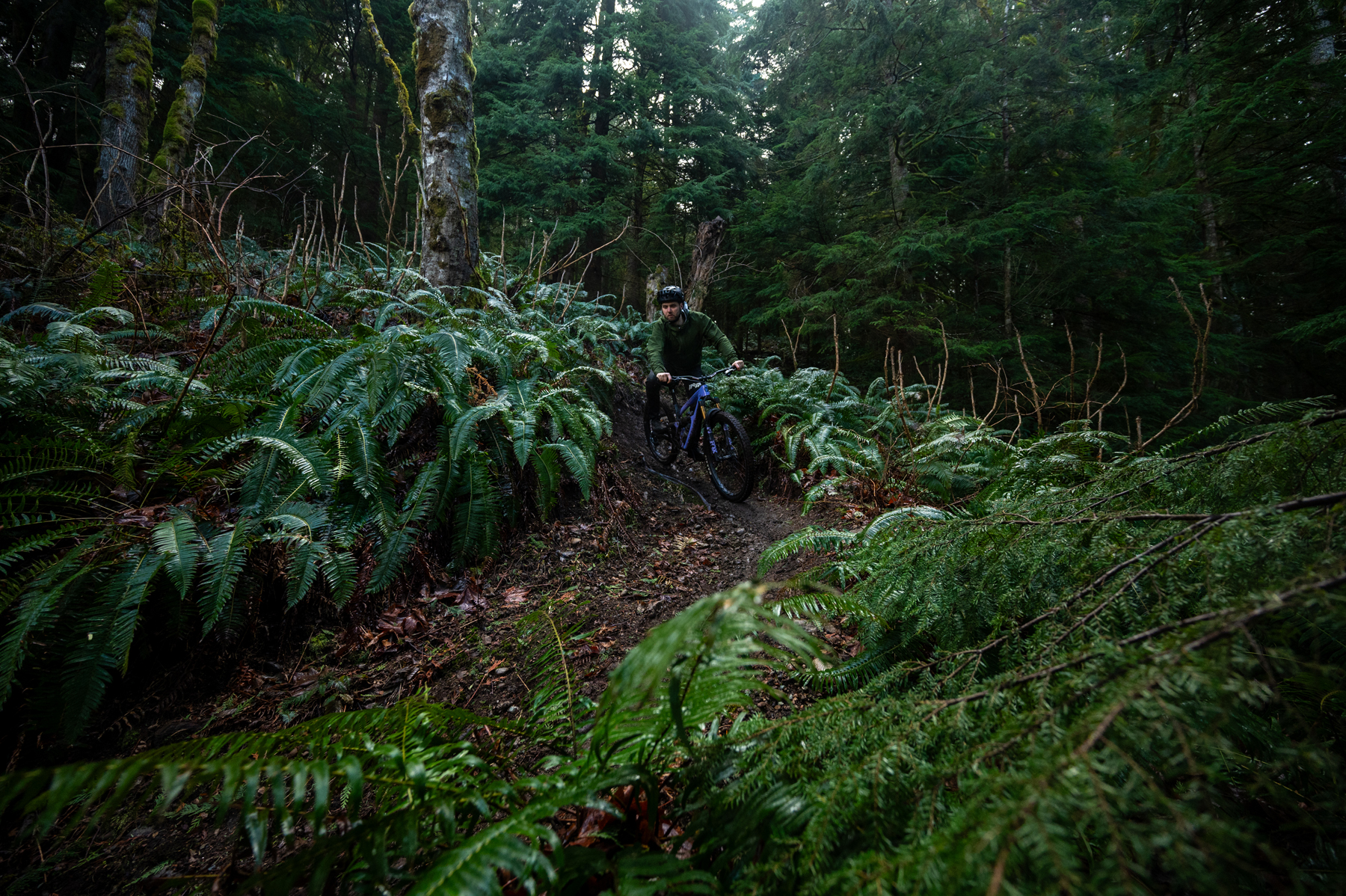
I found that this was largely due to the very forward body position that the HD6 seems to prefer. While its short 435 mm chainstays and 27.5” rear wheel lend a lot of quickness to the rear end, weighting the front end becomes critical to maintain front-wheel traction, given the bike’s otherwise significant rearward weight bias. Loading up the front of the HD6 to keep adequate grip meant that I was putting more weight than normal onto the fork, so I ended up bumping the pressure even higher and maxing out the high-speed compression support (which, to be fair, isn’t all that significant on the GRIP2 damper even when cranked up all the way).
With those changes out of the way, the HD6 started to make a lot more sense. Its 180 mm of travel up front and 165 mm out back go a long way toward quieting down rough bits of trail, but that short rear end, small rear wheel, and low weight give the bike a far more playful personality than its big travel figures would suggest.
Typically a flat-pedal rider, I preferred riding the HD6 with clipless pedals because of how much it seemed to reward precise placement and an active riding style — where some bikes like to plow, the HD6 likes to be lofted over rough bits, snapped through corners, and hucked off natural lips. Its low weight also means that active riding like this is just a bit less taxing than it would be on most other modern, heavier Enduro bikes.
Now, I don’t want to make the HD6 sound like it’s not a burly bike — if you’re looking for a sporty trail companion for longer rides in less demanding terrain, Ibis makes the Ripmo for that. But the HD6 doesn’t demand to be ridden super hard to feel alive. I had the most fun on the HD6 on some of our local trails that are quite rough but cut across the hill, rather than straight down the fall line. There, the HD6’s ability to snap through corners and skip over technical bits kept momentum high where other, beefier bikes might get bogged down.
The downside to this energetic descending feel is that the HD6 can feel a bit punishing of lazy technique on steeper, more consequential terrain. This was most noticeable on really steep and rough trails, where failure to properly weight the front end would make for lots of understeer and, consequently, missed corners. Maintaining that forward body position wears on your upper body over the course of a longer ride in steep terrain, and while a taller front end might help to minimize that effect, my hunch is that longer chainstays would be the ticket to unlocking a less fatiguing ride in steep, demanding terrain.
David: As Zack alluded to, I had a trickier-than-average time getting the suspension setup on the HD6 figured out, but I was eventually able to get things working pretty well.
Ibis’ recommended settings frankly weren’t much help, suggesting a much, much softer overall setup than I wanted, both in terms of spring rate and compression damping. And I was initially thrown for a bit of a loop by some unknown prior rider of our review bike throwing a truly bonkers number of volume spacers into both the fork and shock. My fault for not checking straight away, but I think there is value in first trying the default configuration before messing with stuff — just not when the bike shows up with a wild and non-standard setup, as happened to be the case here.
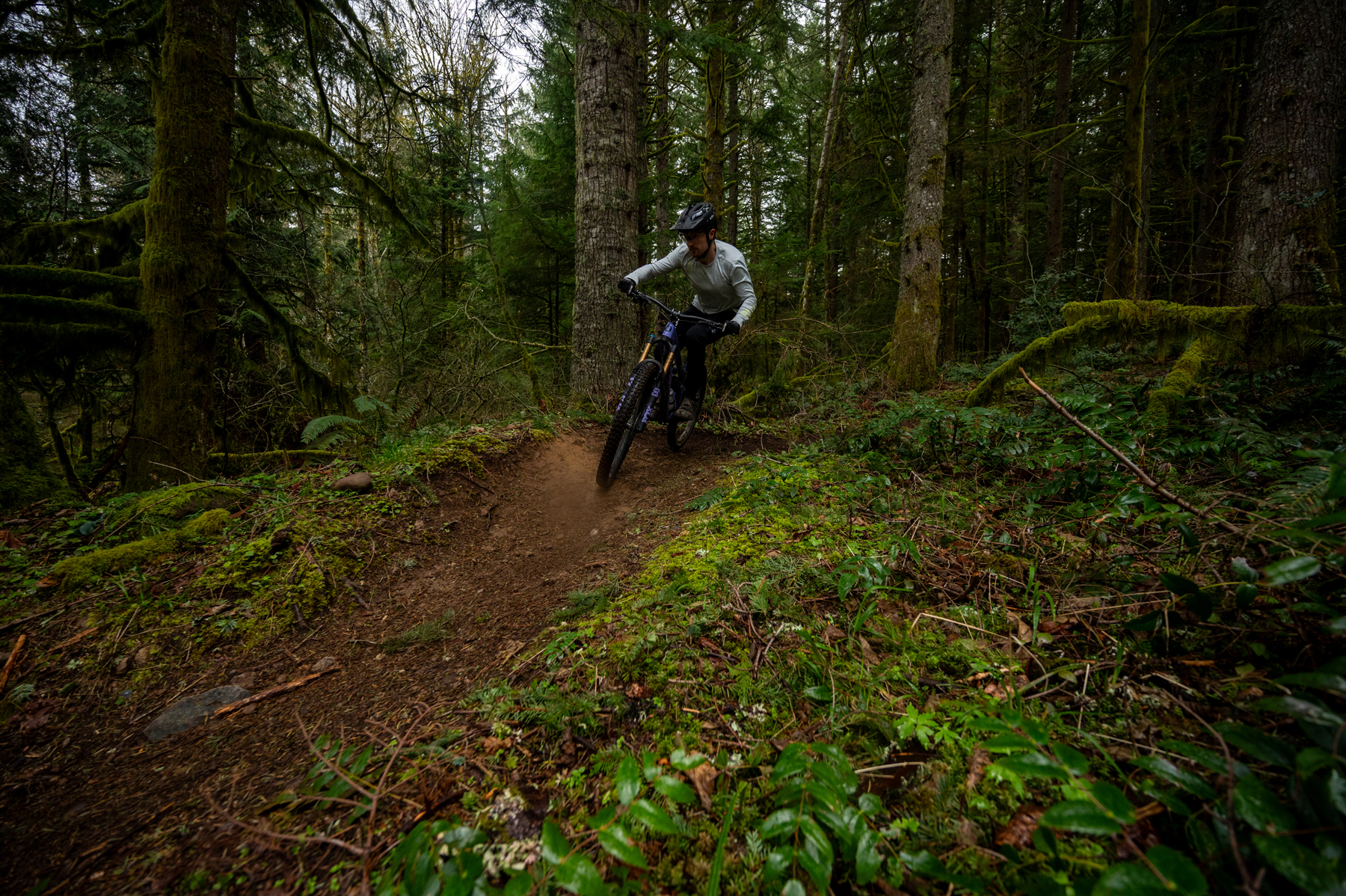
Anyway, a lot of my initial struggles had to do with trying to get as much support from the fork as I wanted on steeper descents. The fact that it had about 20 volume spacers in it (only a slight exaggeration) for my first ride or two didn’t do the fork any favors when it came to midstroke support, but the HD6’s combination of short chainstays (and resulting preference for a fairly forward stance), short-ish stack height, and extra fork travel as compared to the rear make getting good fork support especially important.
On very steep trails, the HD6’s sweet spot (in terms of body positioning) frankly feels pretty small. It’s a bike that needs a bunch of weight over the front end to maintain grip there, but it’s pretty easy to overdo it and have the front end start to dive when you really load it up. Raising the bars (I tried up to a 40 mm rise bar as an experiment) helps mitigate the sensation of going over them when things get really steep, but also makes it harder to load up the front wheel enough on flatter trails. Ultimately, I just preferred to run the fork pretty stiff and live with not regularly using all the travel, in an effort to help with chassis stability and composure on steeper stuff.
[For the record, I wound up settling on 102 psi, no volume spacers, HSC closed, and LSC at -5.]
Sizing up to the S4 HD6 would probably stretch the sweet spot bigger to some extent, but given the already-short chainstays on the S3 (and lack of size-specific lengths for them), I also think it’d only accentuate the HD6’s demand for a forward-biased stance; in any case, I still think that the seated cockpit length would stop me from sizing up to the S4 anyway.
Like Zack, I clicked most with the HD6 on trails that were fast and rough, but not fall-line plunges. In less-steep scenarios, the HD6’s combination of lively and precise handling, low weight, and ample suspension travel make for a bike that does a really good job of carrying speed while taking a very active, dynamic approach and pumping through, jumping off, and otherwise working with the terrain (rather than trying to bludgeon it into submission). But the HD6 still has the ability to soak up bigger impacts and keep rolling when called upon.
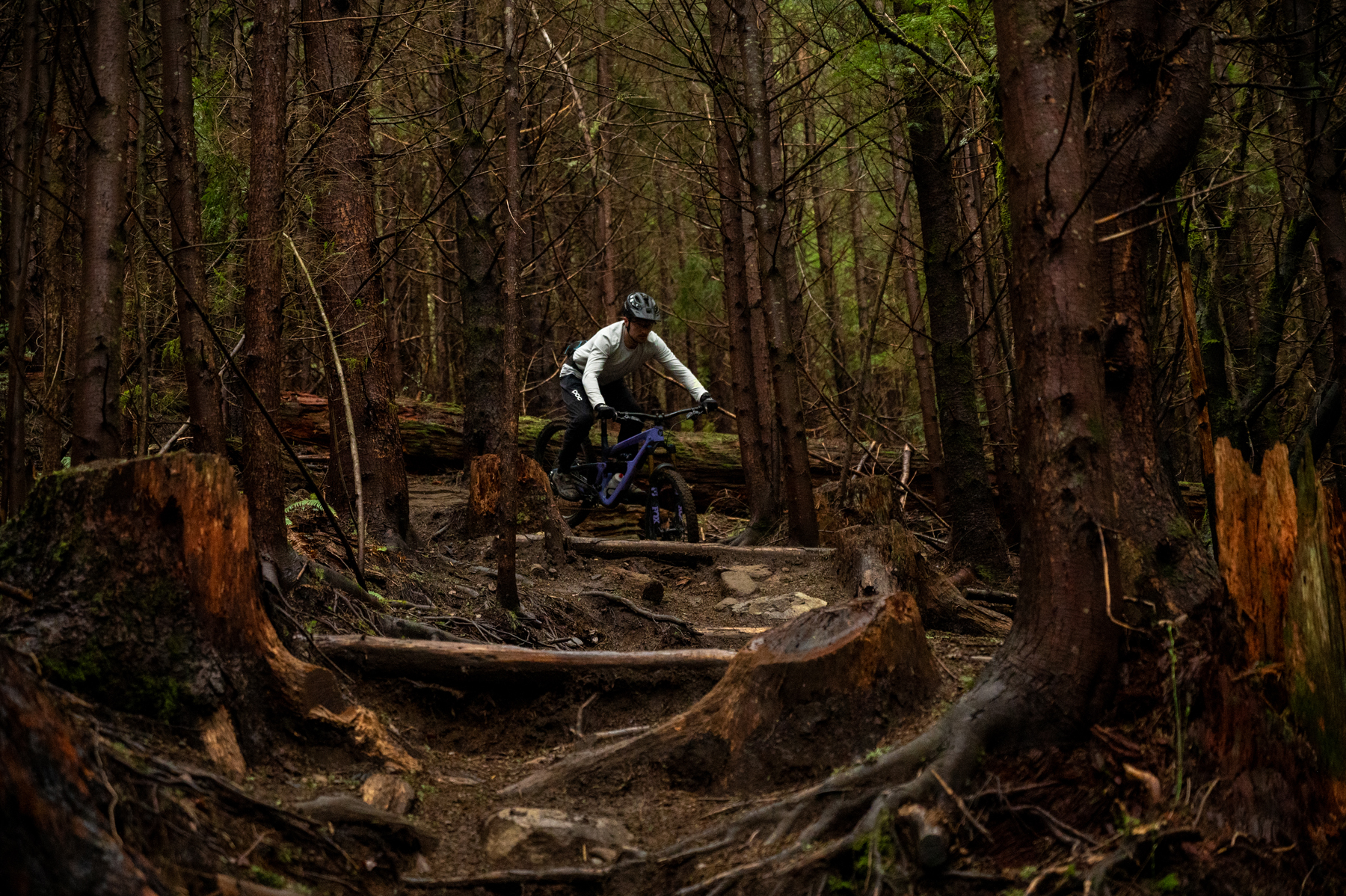
The HD6 is pretty fun on smoother, flowier trails, too — especially for something with this much suspension travel — but its better-than-average versatility doesn’t fully make up for the fact that it is still, ultimately, a pretty big, burly bike. The HD6 is relatively lively, sharp handling, and energetic feeling for a 165mm-travel Enduro bike, but it still is a 165mm-travel Enduro bike. Any number of ~150mm-travel Trail bikes (e.g., Ibis’ own Ripmo) are more efficient and sharp handling if that’s really what you’re after.
The Build
Zack: The XX AXS build on our HD6 is about as fancy as they come, and at an eye-watering $12,000 USD, that had better be the case. The XX Transmission worked great, with the derailleur shrugging off some big impacts caused by some overzealous pursuits of inside lines. The Fox 38 and X2 were both consistent performers as well, and while my wish for more compression-damping support from the fork is an old line at this point, Fox might have finally answered my prayers with the updated Grip X2 damper. More on that one soon, once we’re able to get more time on it.
The Ibis S35 Carbon rims performed admirably and complemented the energetic feel of the HD6, though the very loud Industry Nine Hydra hubs were a bit grating after spending more time on far quieter DT Swiss hubs lately.
I also liked the house brand Ibis Hi Fi handlebar, which uses a 31.8 mm clamp and comes with swappable threaded aluminum inserts at the ends of the bar to allow for easy width adjustment without the need to cut carbon fiber. The Lizard Skins Charger grips were also surprisingly comfortable, which is not something I normally say about stock grips.
I did have a couple of gripes with the spec, the first being the Reverb AXS dropper. In a world of 200+ mm droppers, the Reverb AXS feels outdated with its maximum 170 mm drop. It’s a very expensive piece that seems to still come on most top-spec SRAM builds, but it’s also the first item I would swap — not a great feeling if you’ve just splashed $12K on a bike like this HD6 XX AXS.
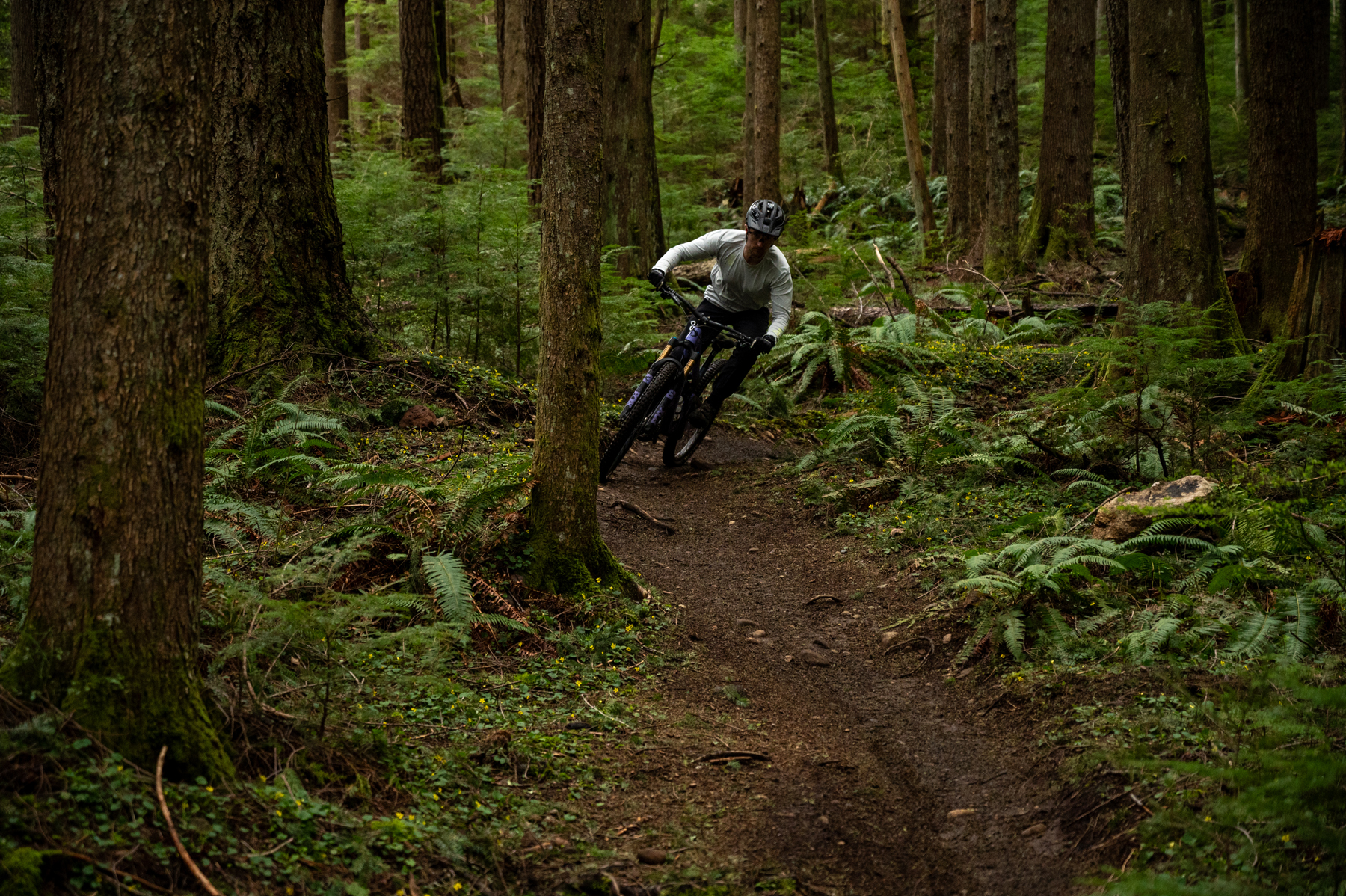
I did have a couple of gripes with the spec, the first being the Reverb AXS dropper. In a world of 200+ mm droppers, the Reverb AXS feels outdated with its maximum 170 mm drop. It’s a very expensive piece that seems to still come on most top-spec SRAM builds, but it’s also the first item I would swap — not a great feeling if you’ve just splashed $12K on a bike like this HD6 XX AXS.
My other spec issue was with the tires, or more specifically, the front tire. Kudos to Ibis for including a DoubleDown casing Maxxis DHR2 out back, as it’s the right choice on any bike with Enduro intentions, but the EXO+ Assegai MaxxTerra up front was a letdown. Being only 160 lbs, I can get away with an EXO+ casing up front, but MaxxTerra rubber in wet conditions, especially with the tall knobs on the Assegai, led to some very scary moments. Some of that was compounded by the HD6’s tendency to understeer without adequate weight on the front wheel, but we see a lot of manufacturers delivering bikes with MaxxTerra front tires when MaxxGrip options are not only available, but also much more appropriate. Your mileage may vary, depending on the trails you frequent.
As a final note, toward the end of testing, I did notice some creaking that seemed to be emanating from the bushings used at the HD6’s lower link. To be fair, the bike had seen a lot of miles and Ibis does cover bushing replacement for free, but I still have my doubts about the durability of bushings relative to bearings, especially in places as waterlogged as Bellingham, WA.
David: Not a ton to add here; I’m in agreement with Zack for the most part. I love the idea behind Ibis’ house-brand handlebar, with its threaded aluminum inserts to experiment with width, but I don’t get along with the shape very well. It feels like it has a ton of backsweep, and I’d personally prefer less than most modern bars — but we’re squarely into the realm of personal preference there. Otherwise, we’re on the same page.

Who’s It For?
Zack: The Ibis HD6 may look like a big brawler at first glance, but its on-trail performance is much more versatile and uncommon within the Enduro class. Compared to a number of other bikes with similar travel figures, the HD6 is more scalpel than meat cleaver, and its precise ride makes it a very compelling quiver-of-one for an Enduro-minded rider who wants a good amount of suspension for rough trails, but values efficiency and a lively ride.
Personally, I would love to see Ibis follow others in the industry by going with size-specific chainstays since I think that even another 5 mm of chainstay length could help the HD6’s handling feel a bit less demanding when trails get particularly steep. But as it stands, the HD6 is a lightweight and surprisingly engaging ride that stays fun even when speeds come down.
David: The HD6 might well be the ticket if you’re drawn to this class of bikes because you want more compliance and comfort in rougher terrain than you can get out of a 140-150mm-travel Trail bike, but you find most bikes in the HD6’s travel class to be too heavy, ponderous, and dead-feeling when they’re not pointed down something super steep and fast. That said, I’d hesitate to classify the HD6 as truly feeling like a long-travel Trail bike. It’s still pretty big, pretty stable, and so on.
The HD6 is, first and foremost, an Enduro race bike for folks who want something that feels more lively and energetic than most modern bikes in that class, and I think that’ll click for the right folks.
Bottom Line
Ibis has built a reputation for making light, efficient bikes in the XC and Trail realms, but they’ve been slow to add a true Enduro bike to their lineup. The HD6 takes a lot of the familiar Ibis DNA we’ve come to expect of their other bikes and adds some suspension travel, longer, slacker geometry, and so on.
The end result is a very versatile, very efficient take on a big Enduro bike — one that we can see working for folks who prioritize a lively, energetic feel but still want quite a bit of suspension travel and a fairly stable-handling bike, whether or not they plan to ever take it racing.
Deep Dive Comparisons
BLISTER+ members and those who purchase our Digital Access Pass can check out our Deep Dive comparisons linked below. Get our Digital Access Pass to view all our Deep Dives and Flash Reviews, or become a BLISTER+ member today to get access to that and a LOT more, including the best worldwide Outdoor Injury Insurance, exclusive deals and discounts on skis, personalized gear recommendations from us, and much more.
Check out our Deep Dive Comparisons of the Ibis HD6 to see how it compares to the Yeti SB165, Orbea Rallon, Yeti SB160, Pivot Firebird, Norco Sight, Propane Tyee, Santa Cruz Nomad, Chromag Lowdown, Kavenz VHP 16, Specialized Enduro, and REEB Steezl.

